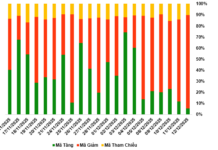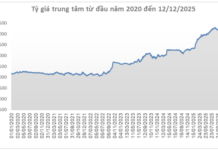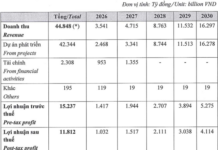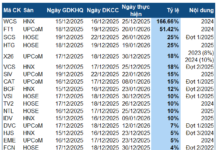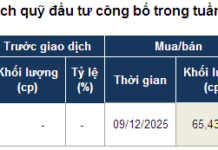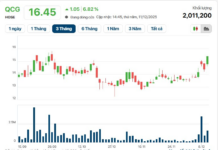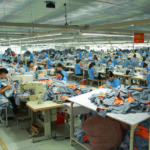
This is the Vinh Te Canal (also known as the Vinh Te Channel). According to historical records from the Nguyen Dynasty, this canal is 91 km long, 30 m wide, and 2.55 m deep. The Vinh Te Canal was constructed by human labor over a period of 5 years, from 1819 to 1824.
The Vinh Te Canal is considered the most important irrigation work in the Mekong Delta region of An Giang Province, dating back to the 19th century. The canal runs parallel to the Vietnam-Cambodia border, starting from the west bank of the Chau Doc River in Vinh Nguon Ward, Chau Doc City, and extending to Giang Thanh River in Ha Tien City, Kien Giang Province.
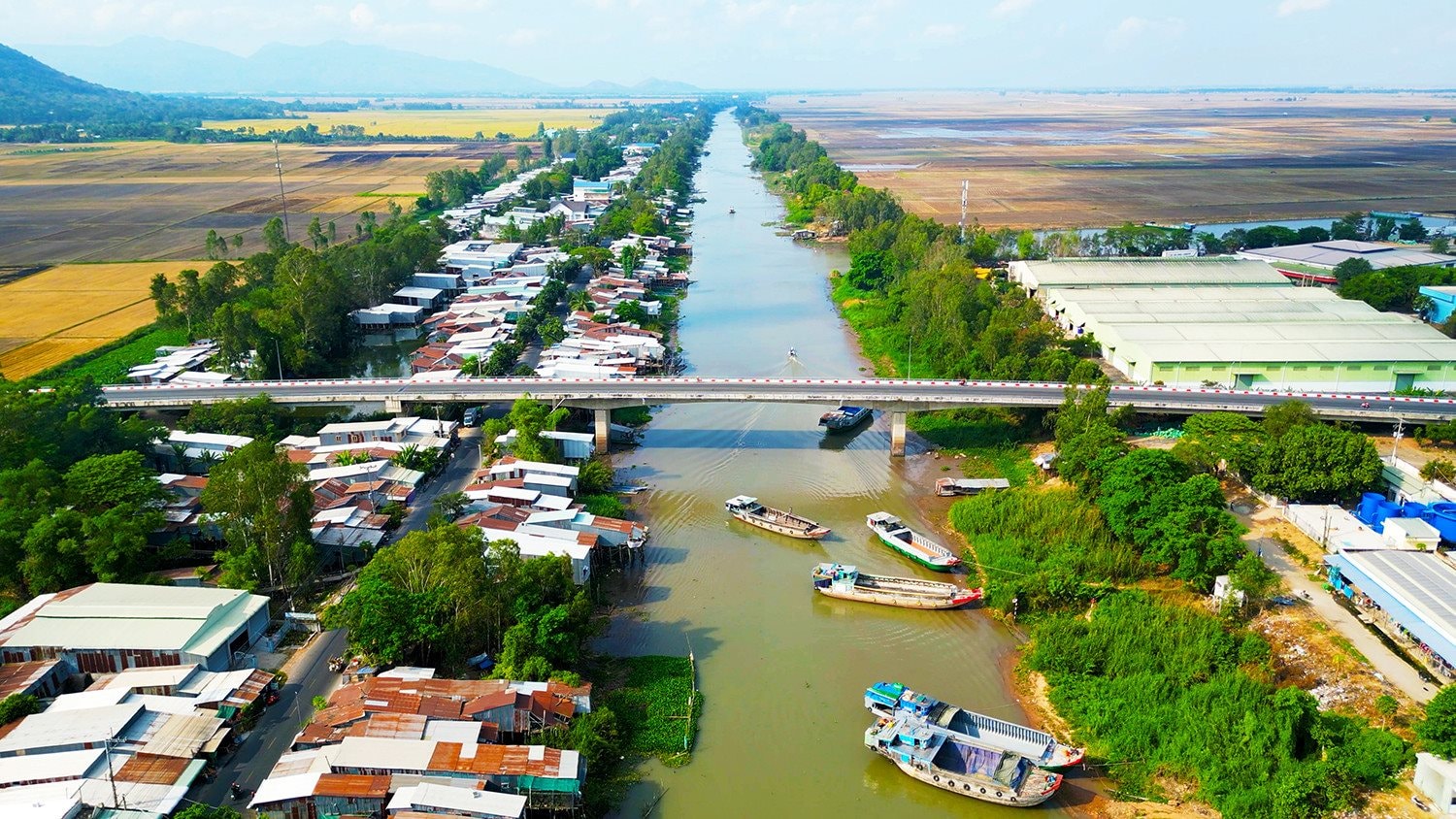
The Vinh Te Canal served as a natural and solid defense line to protect the southwestern border. Photo: An Giang Portal
The Vinh Te Canal created an important upstream irrigation system for the Long Xuyen Quadrangle region, contributing to the development and transformation of this land. Even today, 200 years after its completion, the canal still holds significant value in terms of irrigation, transportation, trade, and border defense, showcasing the wisdom and creative labor of our ancestors in nation-building.
The 200-Year-Old Canal Sets a Vietnamese Record
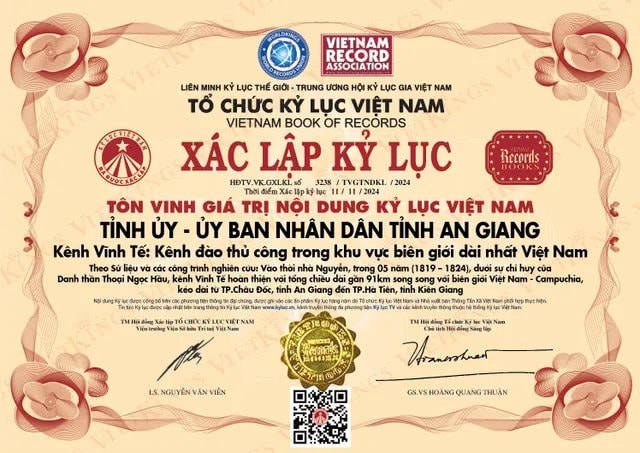
The Vinh Te Canal is recognized as the Longest Hand-Dug Canal in the Border Region of Vietnam. Photo: Vietnam Records Organization
On November 14, the Vinh Te Canal officially set a Vietnamese record. The recognition, titled “Vinh Te Canal: The Longest Hand-Dug Canal in the Border Region of Vietnam”, was presented by the Vietnam Records Association to the People’s Committee of An Giang Province during a ceremony commemorating the 200th anniversary of the canal’s completion (1824 – 2024) and paying tribute to the 198th death anniversary of Lady Chau Thi Te, wife of the canal’s builder, in Sam Mountain Tourist Area.
On the same day, at a national-level scientific workshop themed “200 Years of Vinh Te Canal – Historical Values and Future Visions,” Mr. Le Hong Quang, Secretary of the An Giang Party Committee, emphasized the significant achievements of the canal, which were made possible by the efforts of high-ranking official Thoai Ngoc Hau and his wife, Lady Chau Thi Te.
For two centuries, the canal has played a particularly crucial role in various aspects. It serves as a vital transportation route, connecting different regions and facilitating the movement and trade of goods. Additionally, it provides freshwater and sediment to the fields in the Long Xuyen Quadrangle region. Most importantly, the Vinh Te Canal functions as a solid natural defense line, protecting the southwestern border of the nation.
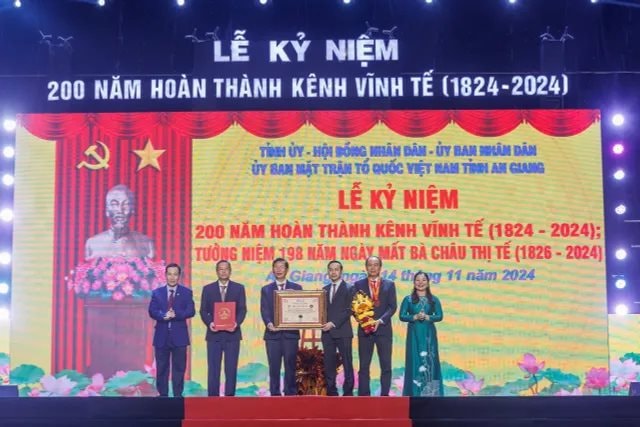
The Vietnam Records Association presents the record certificate to the leaders of An Giang Province. Photo: An Giang Province People’s Committee
Associate Professor and Doctor Vu Quang Dao, former Director of the Institute of Military History of Vietnam, asserted that the Vinh Te Canal played a pivotal role in marking, establishing, and affirming the sovereignty of the Vietnamese people in the Southern region.
Along with the canal, defensive fortifications were built to protect the land and its inhabitants, and the Nguyen Dynasty actively promoted policies encouraging the reclamation of wasteland and the establishment of new villages. According to Associate Professor and Doctor Vu Quang Dao, these measures provided solid assurance for Vietnamese residents to confidently venture into the Southern region to cultivate and settle. The design and construction of the Vinh Te Canal so close to the border demonstrate the far-sighted vision of the Nguyen Dynasty rulers.
The Vinh Te Canal Holds Significant Potential
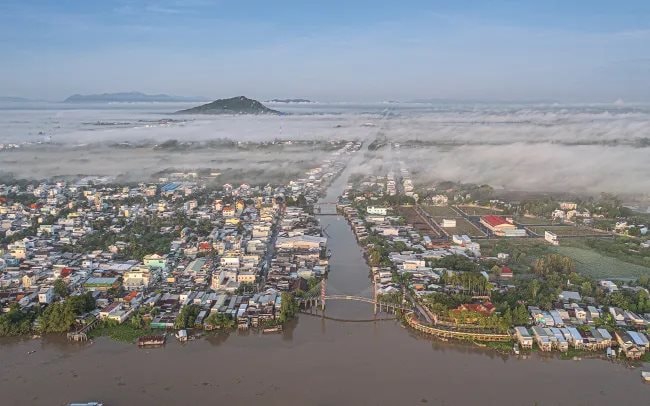
According to experts, the Vinh Te Canal still holds significant potential. Photo: Vietnam Records Organization
At the workshop, Associate Professor and Doctor Nguyen Van Nhat, Vice Secretary General of the Historical Science Association of Vietnam, emphasized that the Vinh Te Canal is the largest canal in An Giang Province and one of the four major canals in the Mekong Delta. Its value continues to be recognized and promoted to this day.
Specifically, in July 1996, recognizing the canal’s importance, the late Prime Minister Vo Van Kiet decided to launch the T5 – Tuan Thong canal project (later named the Vo Van Kiet canal) with a length of 36.7 km, bringing freshwater from the “mother canal” Vinh Te across the Long Xuyen Quadrangle to the Western Sea.
Associate Professor and Doctor Nguyen Van Nhat asserted that thanks to this canal, the 10-year exploitation of the Long Xuyen Quadrangle (1989-1999) was a success, significantly contributing to An Giang’s rice production, placing it among the top provinces in the country.
Meanwhile, Associate Professor and Doctor Nguyen Dinh Le from the University of Social Sciences and Humanities, Vietnam National University, Hanoi, stated that scientific utilization of the Vinh Te Canal’s potential could help overcome challenges posed by natural disasters, especially the impacts of climate change and saltwater intrusion in the Mekong Delta region.
According to historical records, in 1819, after thorough research, King Gia Long issued a royal decree, entrusting the construction of the Vinh Te Canal to the high-ranking official Thoai Ngoc Hau, who was the governor of Vinh Thanh at that time. The decree acknowledged the arduous nature of the task but emphasized its long-lasting benefits for generations to come.
Upon its completion in 1824, the canal was named “Vinh Te River” by King Minh Mang to honor the contributions of Lady Chau Thi Te, wife of the high-ranking official Thoai Ngoc Hau. Lady Chau Thi Te played a crucial role in the construction of the canal.
The Prime Minister: Vietnam’s Focus on Iconic Mega-Projects
Addressing the Vietnamese community in Brazil, Prime Minister Pham Minh Chinh emphasized Vietnam’s current focus on large-scale, transformative projects. These include the ambitious North-South high-speed rail project, which aims to revolutionize transportation across the country, as well as explorations into nuclear energy development and the pursuit of new avenues for growth and progress.
High-Speed North-South Railway: A Massive Opportunity, but…
The upcoming high-speed rail project presents an enormous opportunity for Vietnamese businesses to undergo a significant transformation. Experts believe that local enterprises must collaborate and invest in technology to take on this iconic national project. If Vietnamese businesses fail to unite and embrace technological advancements, we risk losing out on our home turf.
The Evolution of Trade Figures Between Vietnam and Russia
Vietnam’s trade with the Russian Federation has reached 3.52 billion USD in the first three quarters of this year, a significant 41% increase compared to the same period last year. This has sparked a growing interest from Vietnamese enterprises, with many delegations traveling to Russia to explore market opportunities.
The Textile Industry in Q3: Who’s Stuck and Who’s Thriving?
Many textile and garment businesses have reported a surge in profits, setting new records in the third-quarter financial reports; however, some continue to face challenges and negative impacts from the previous year.




